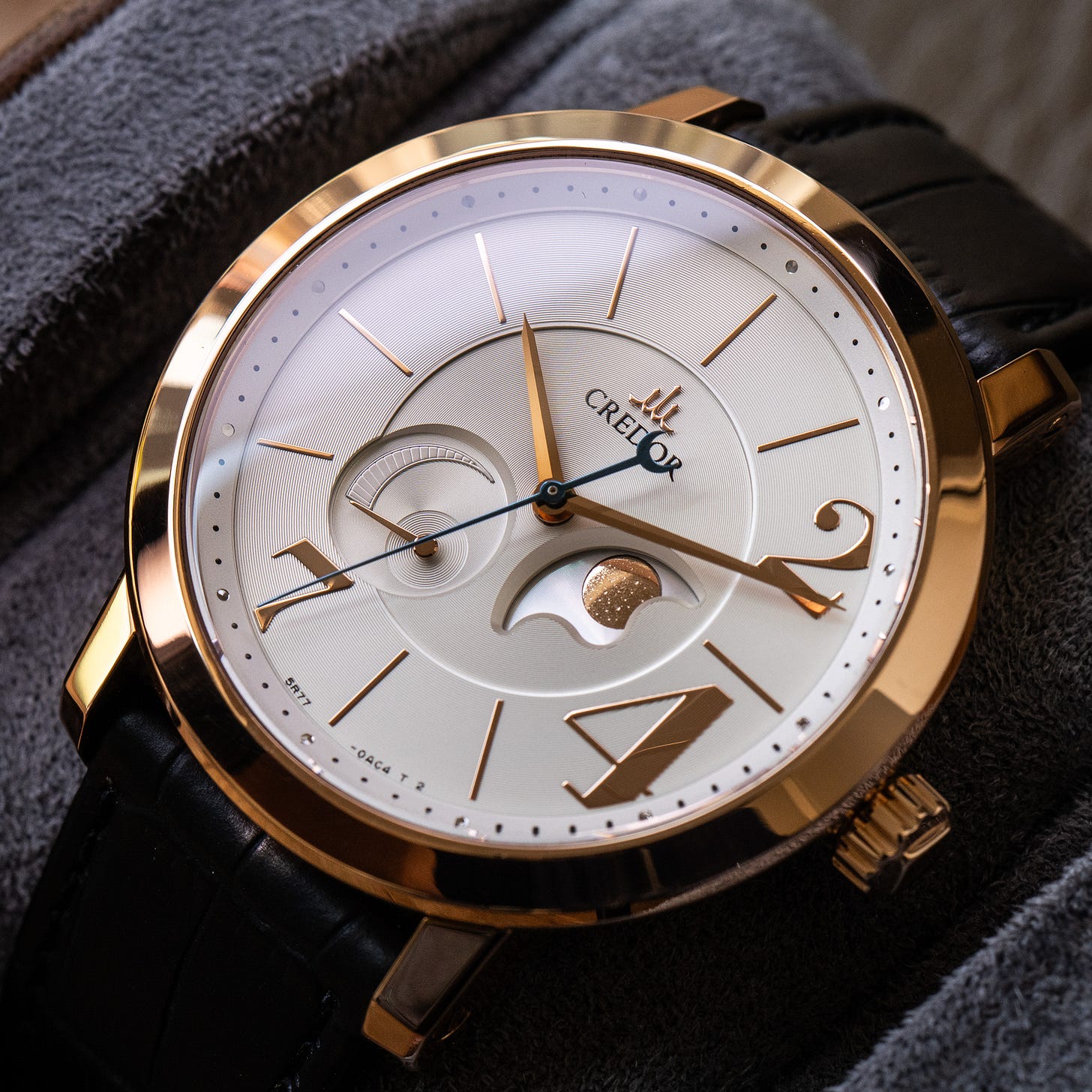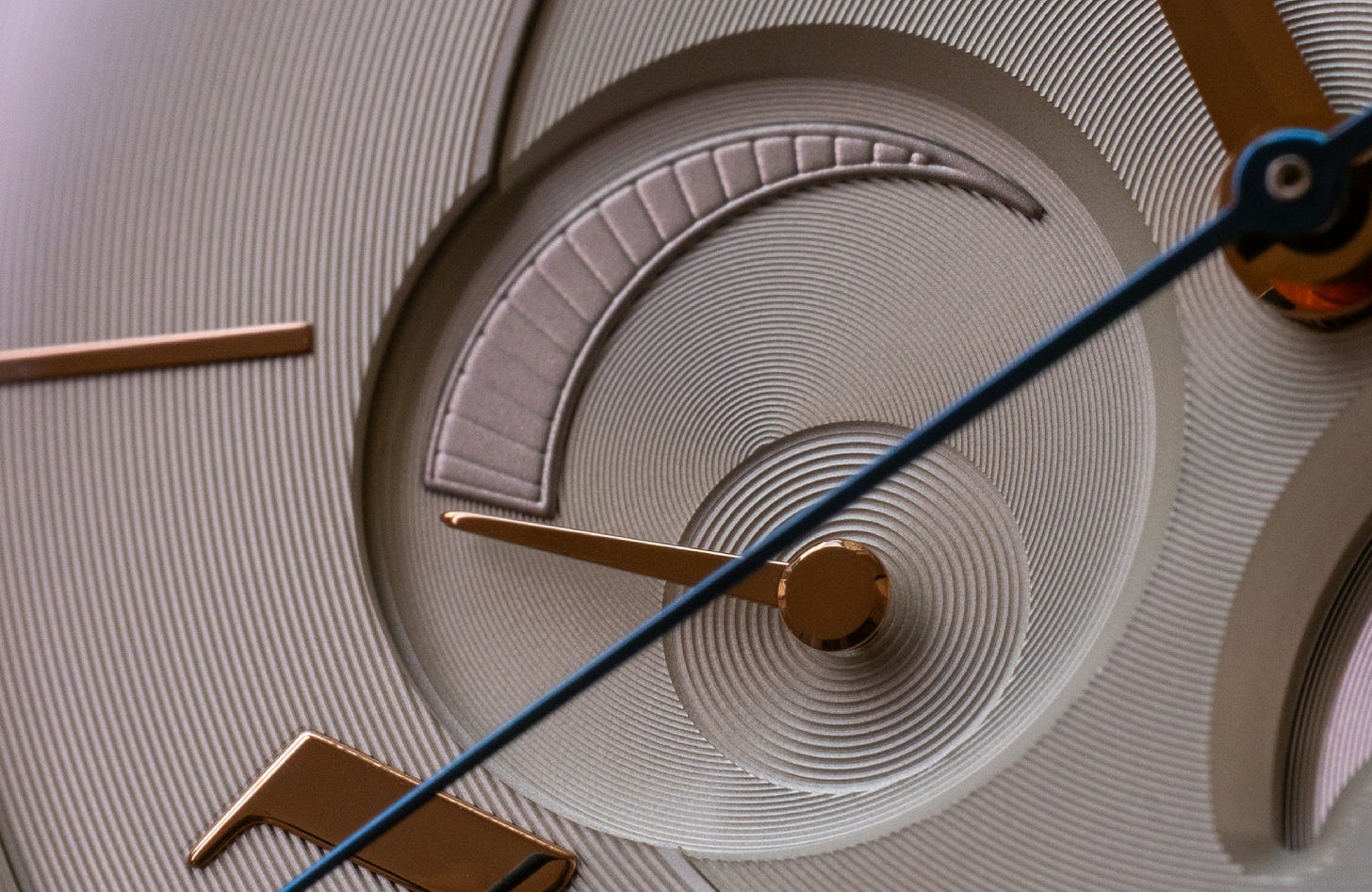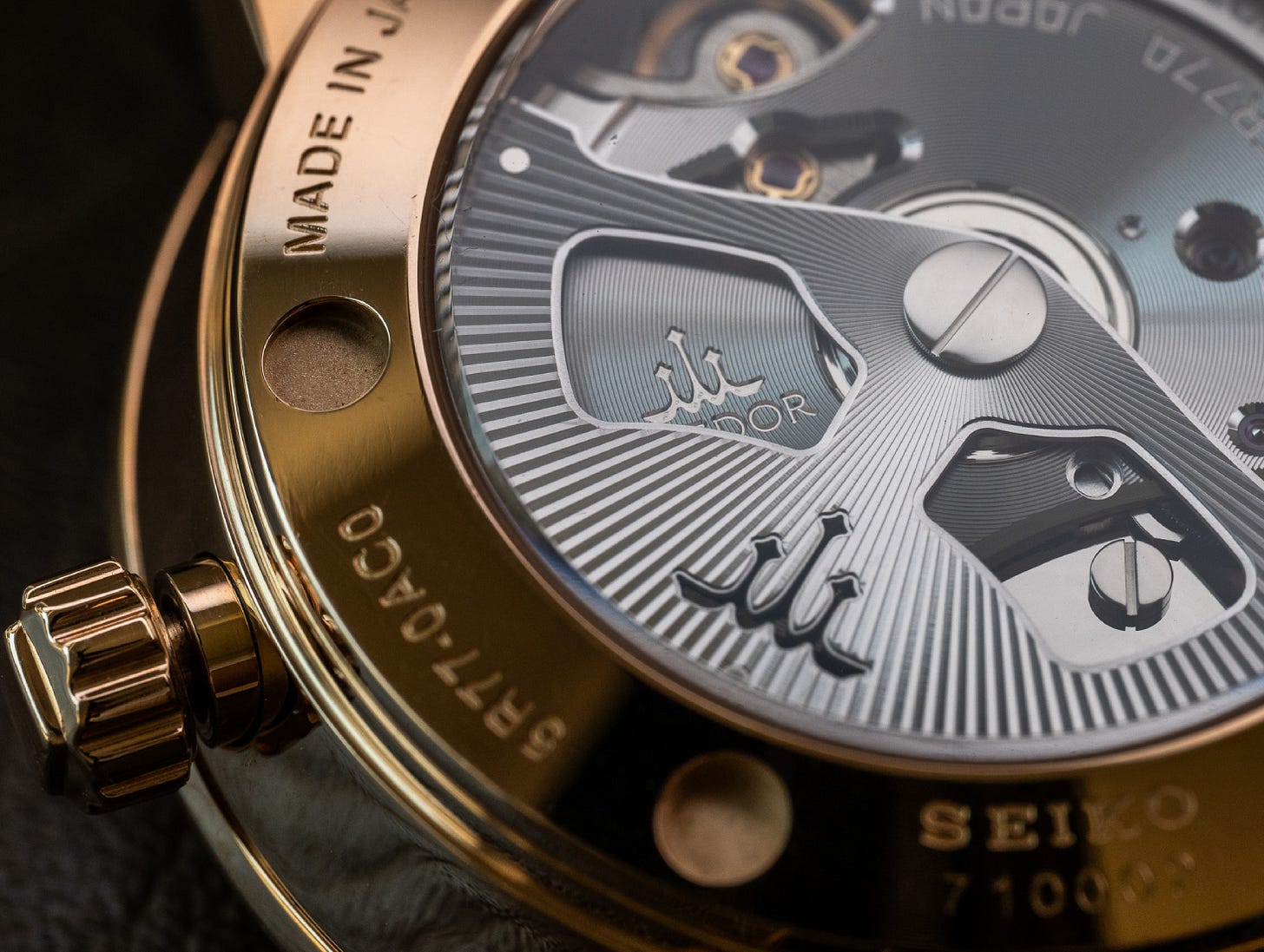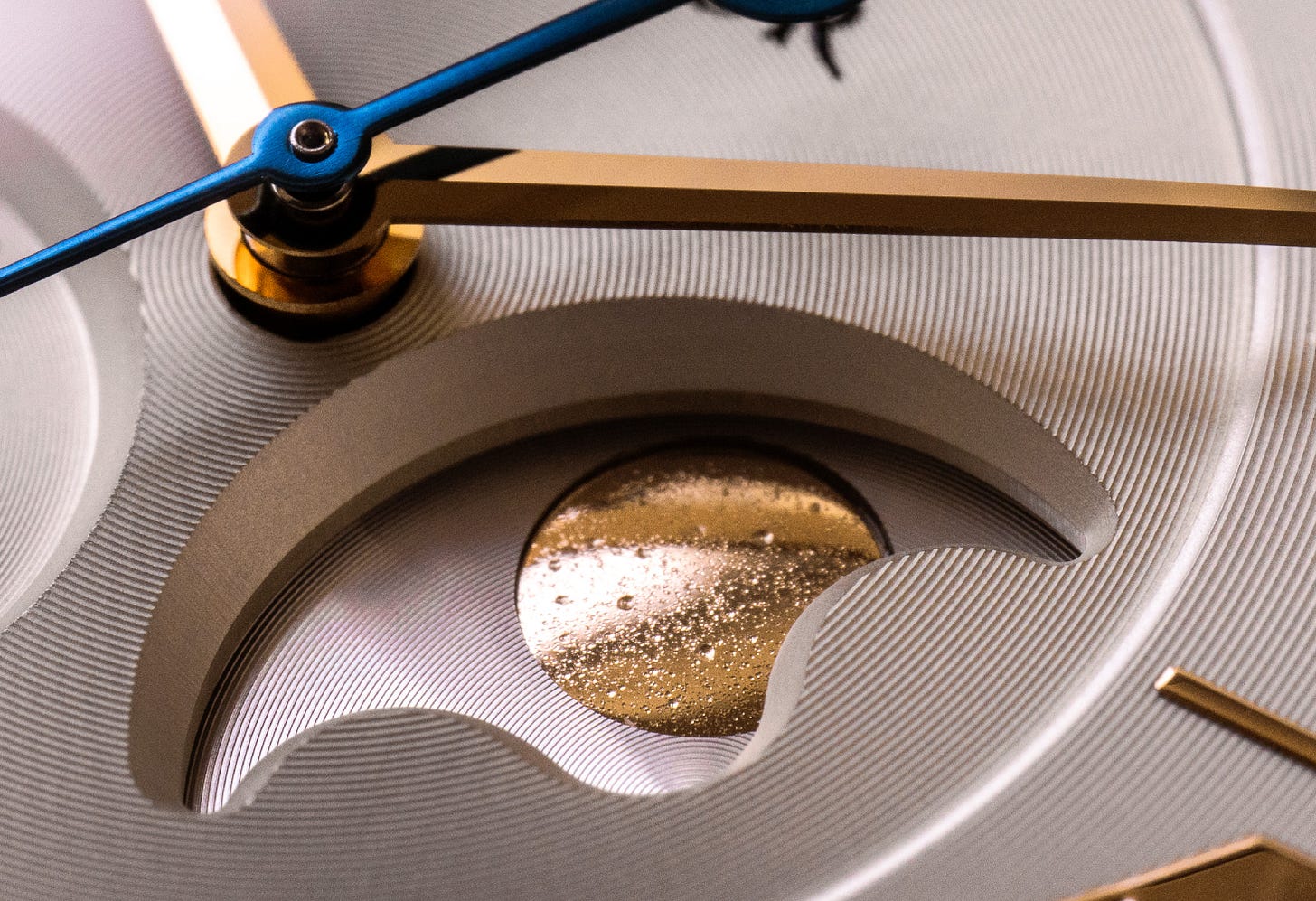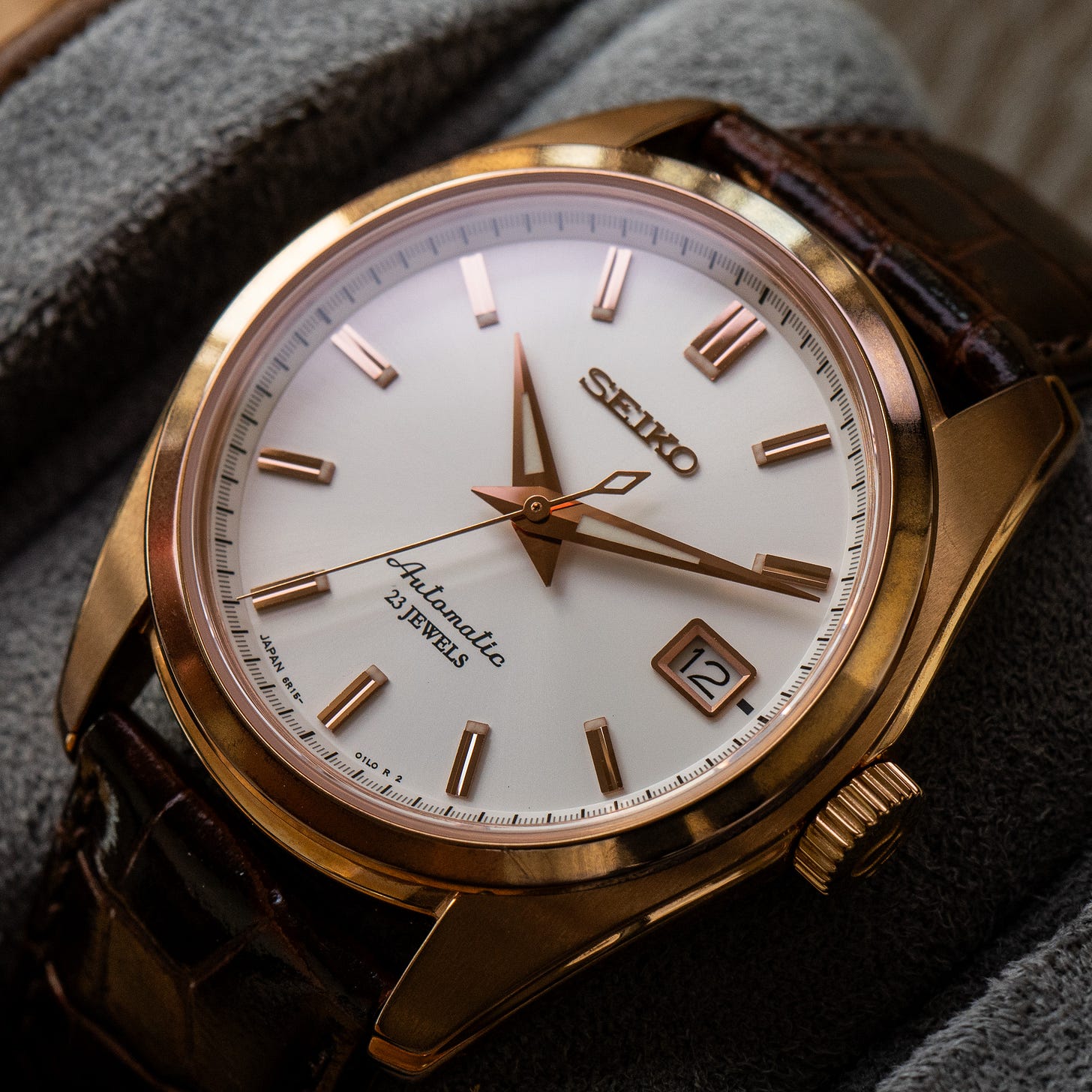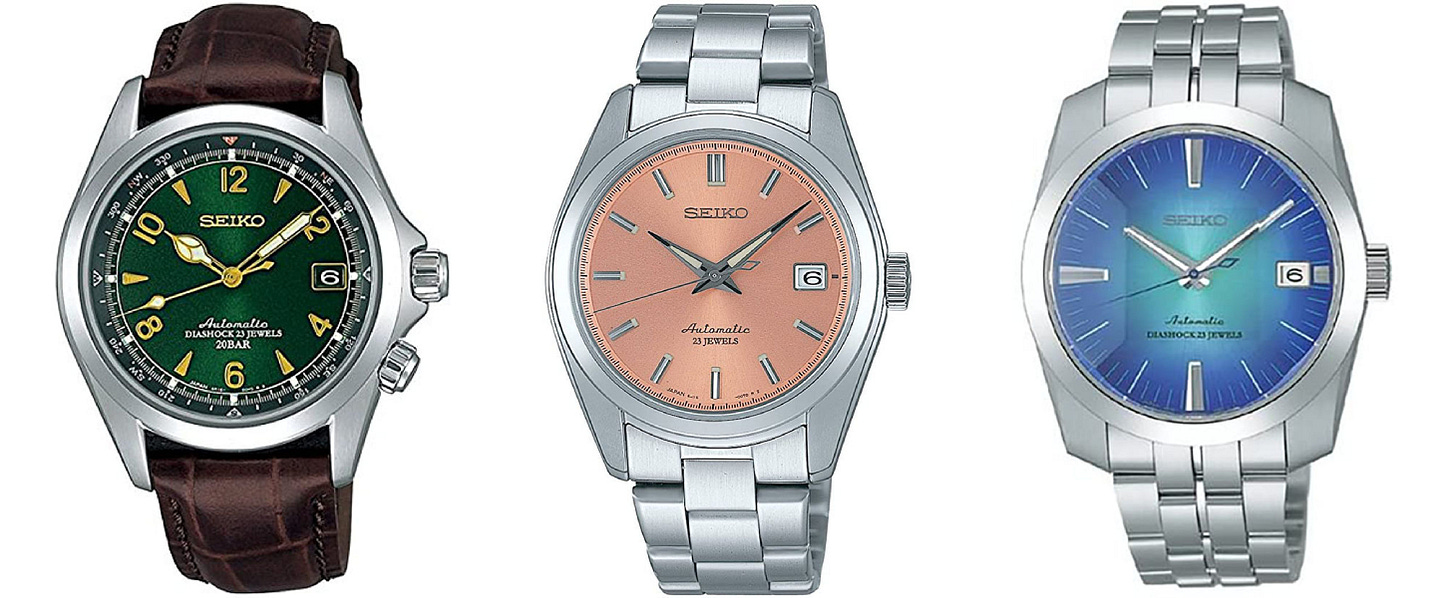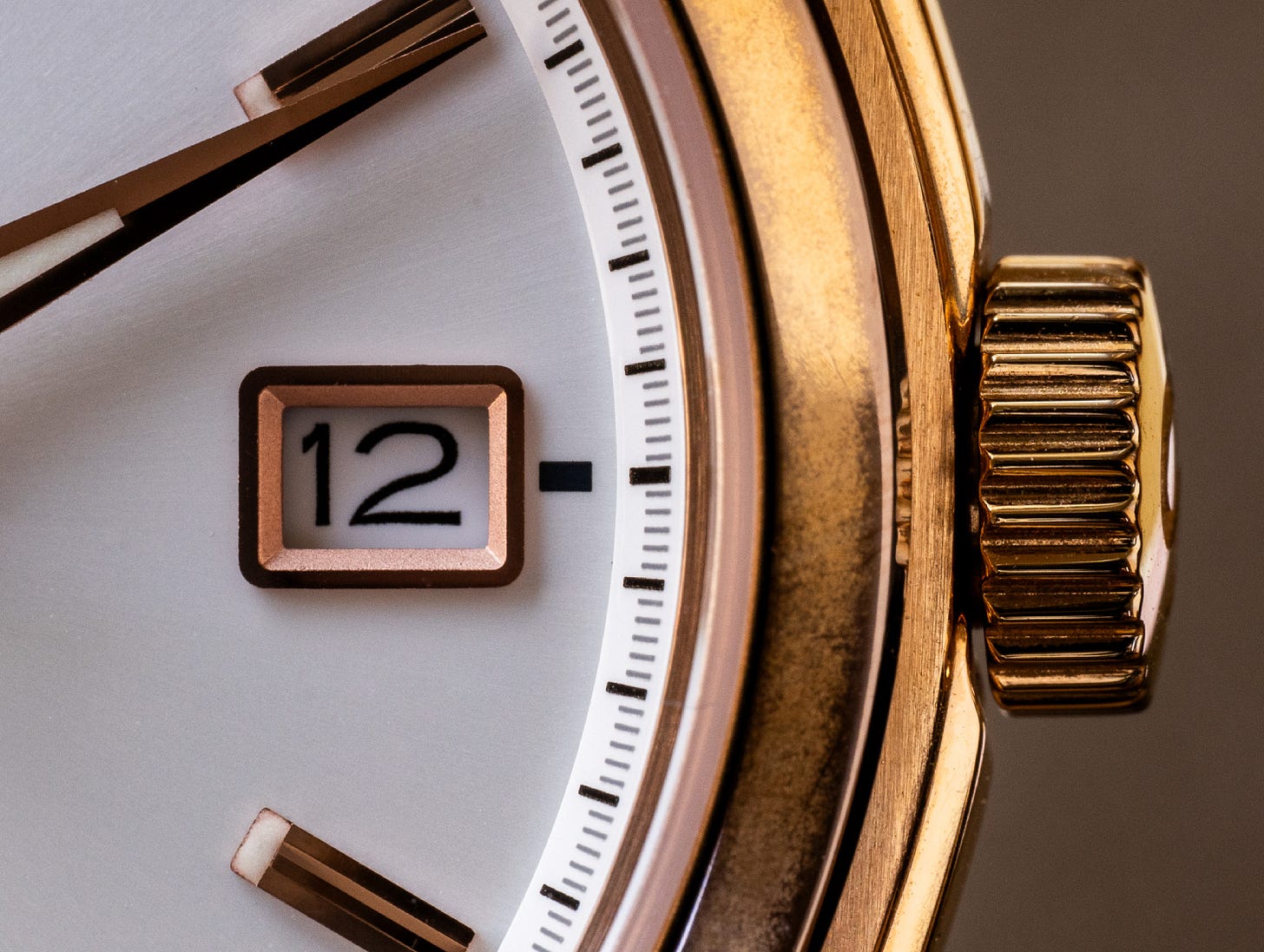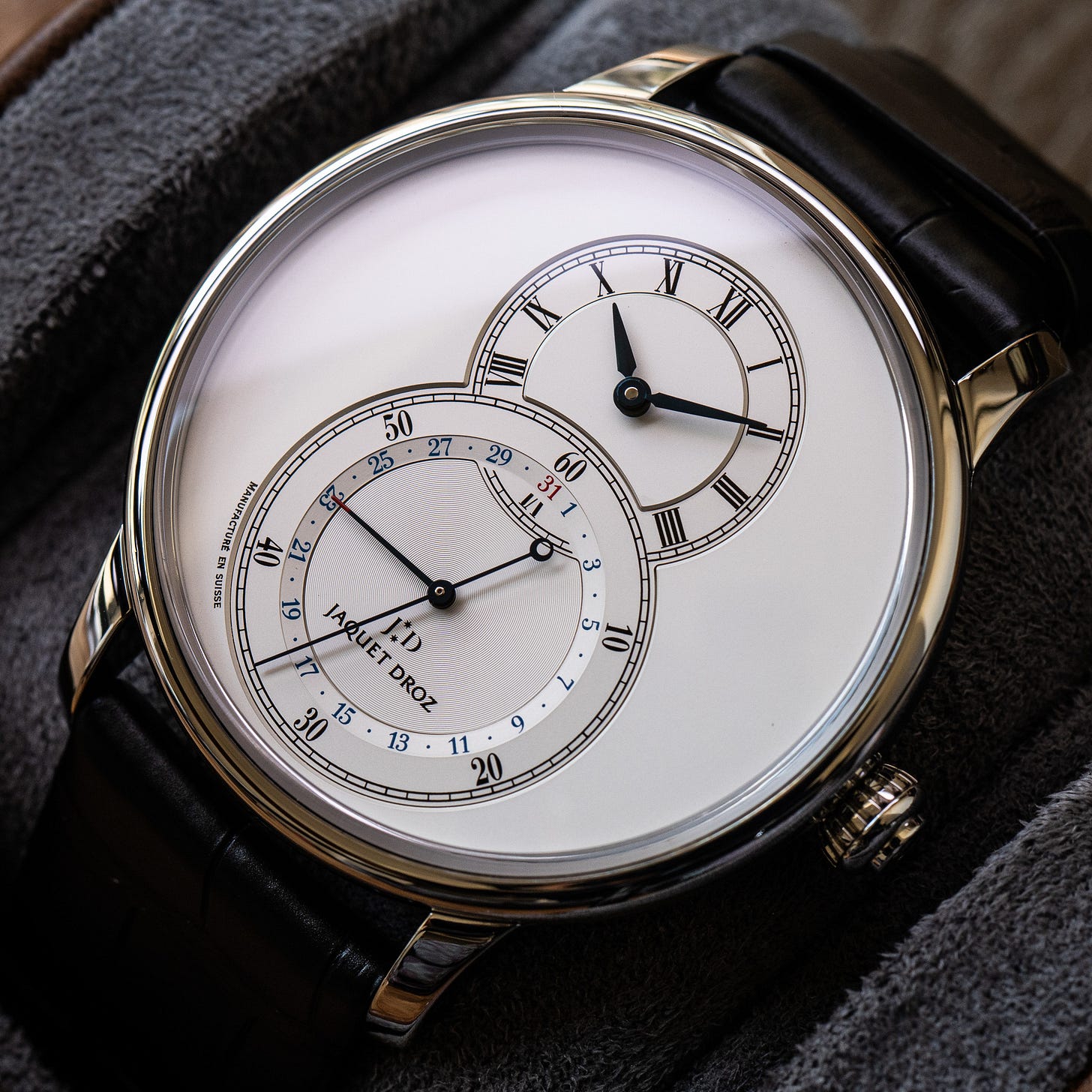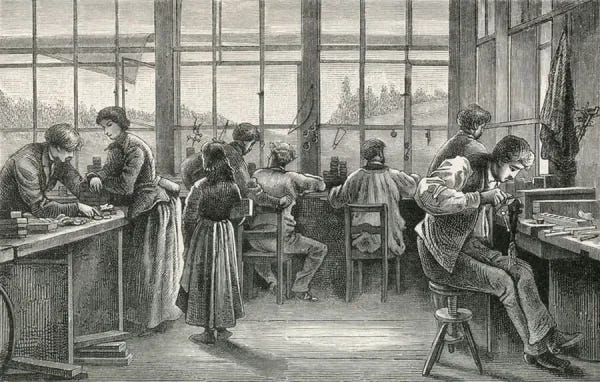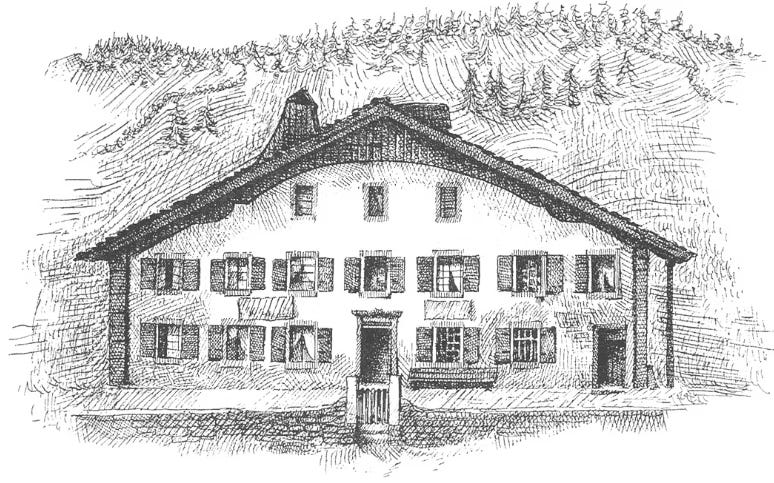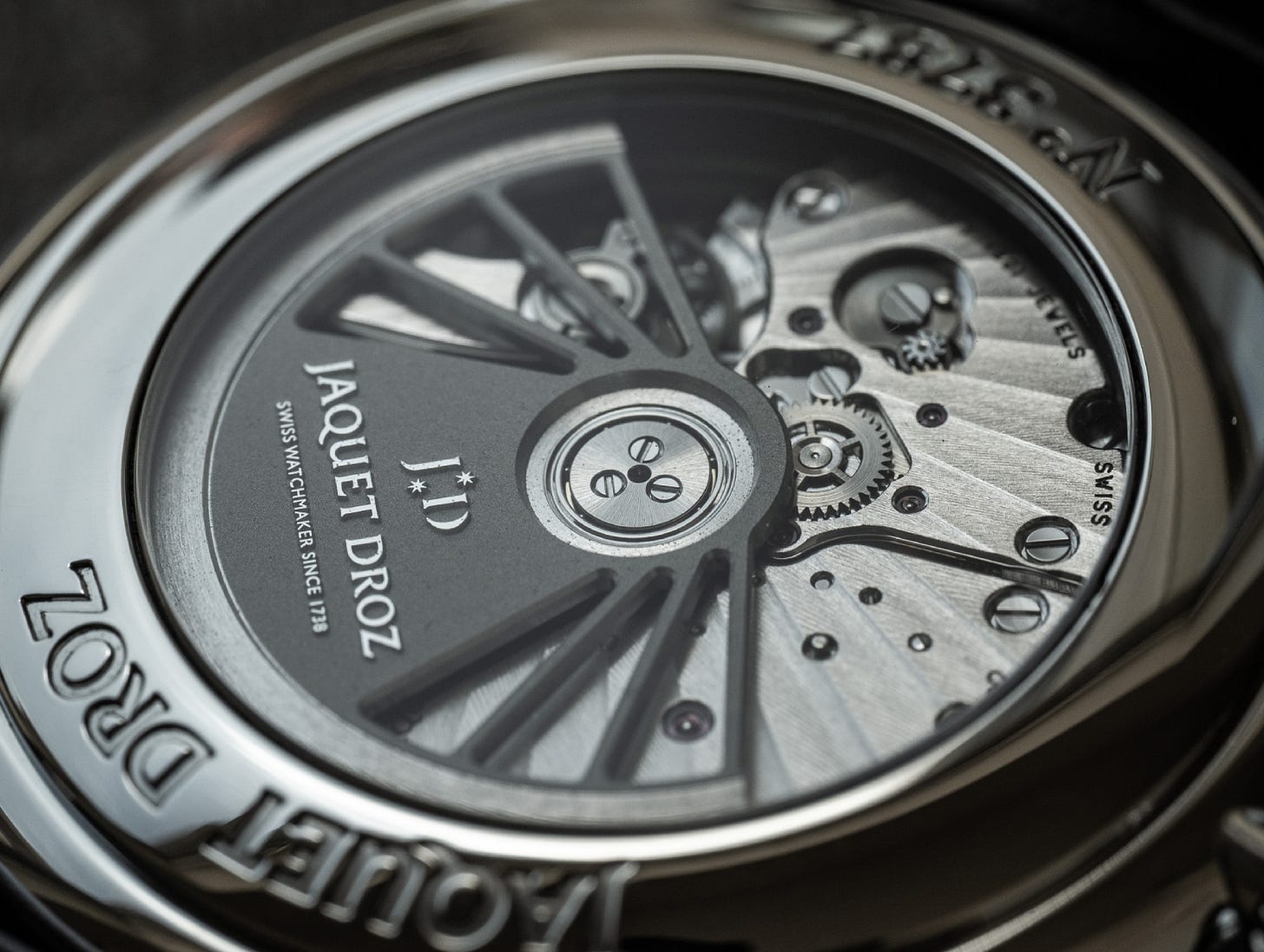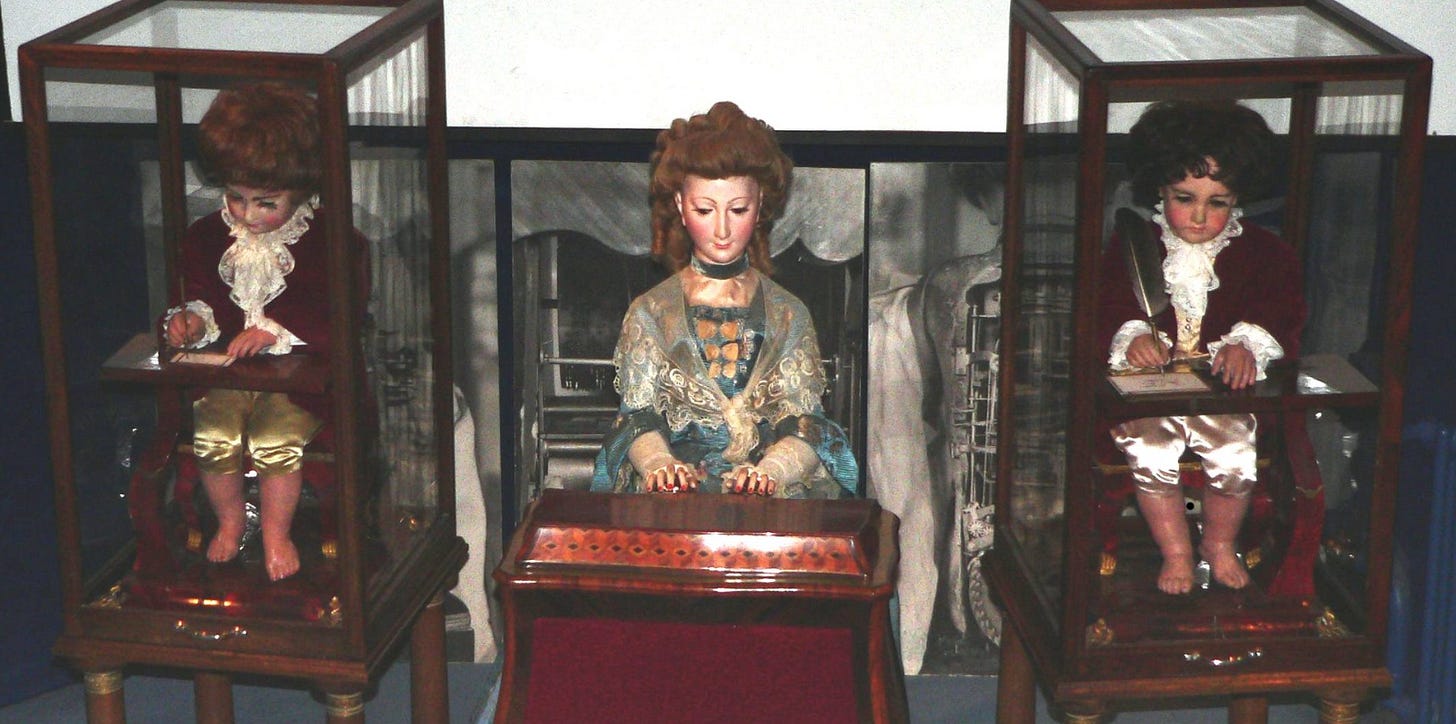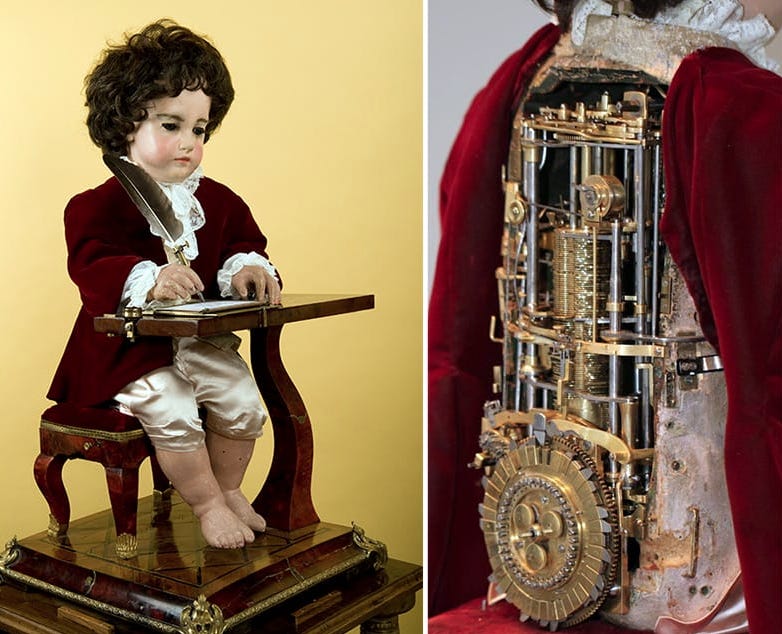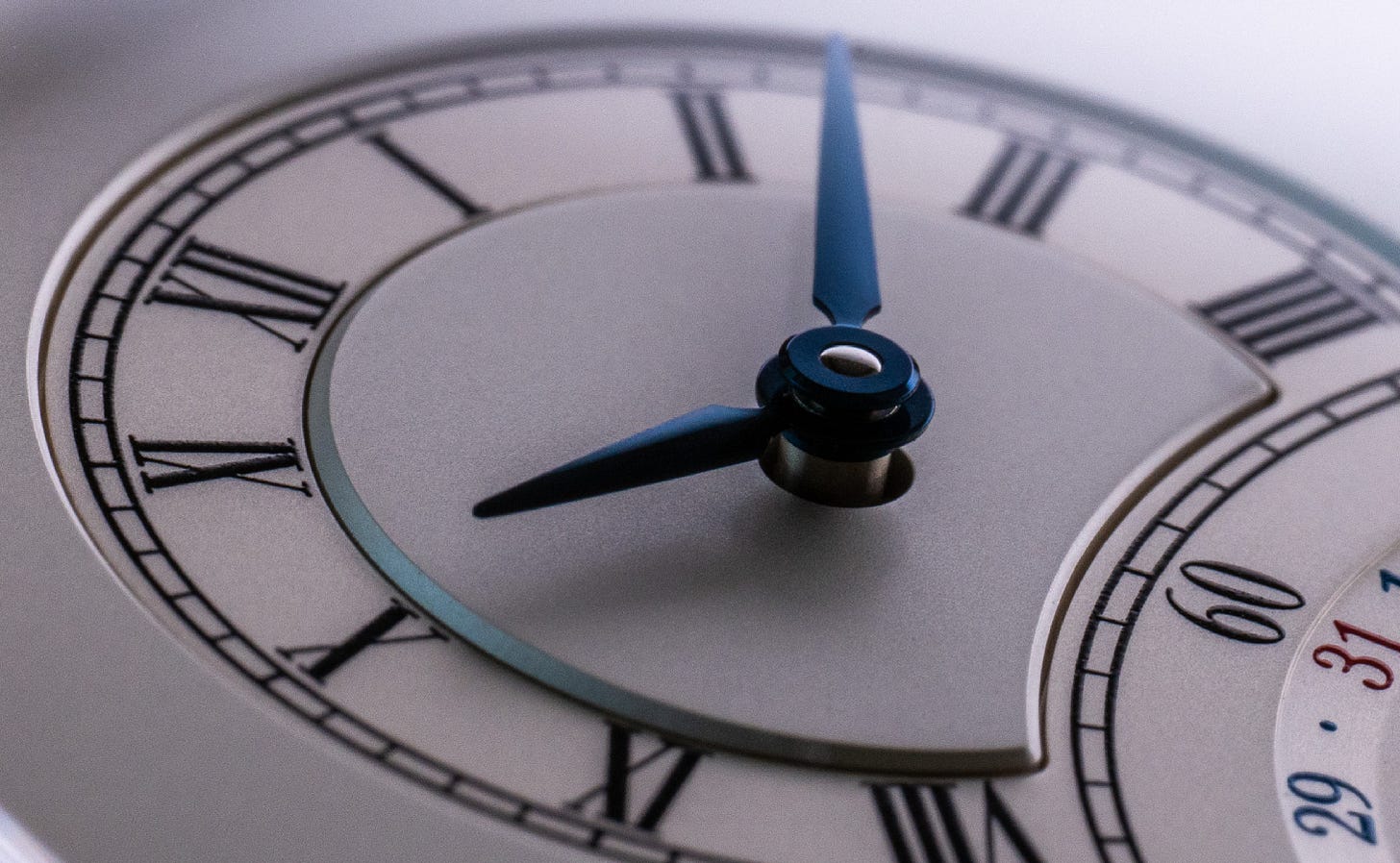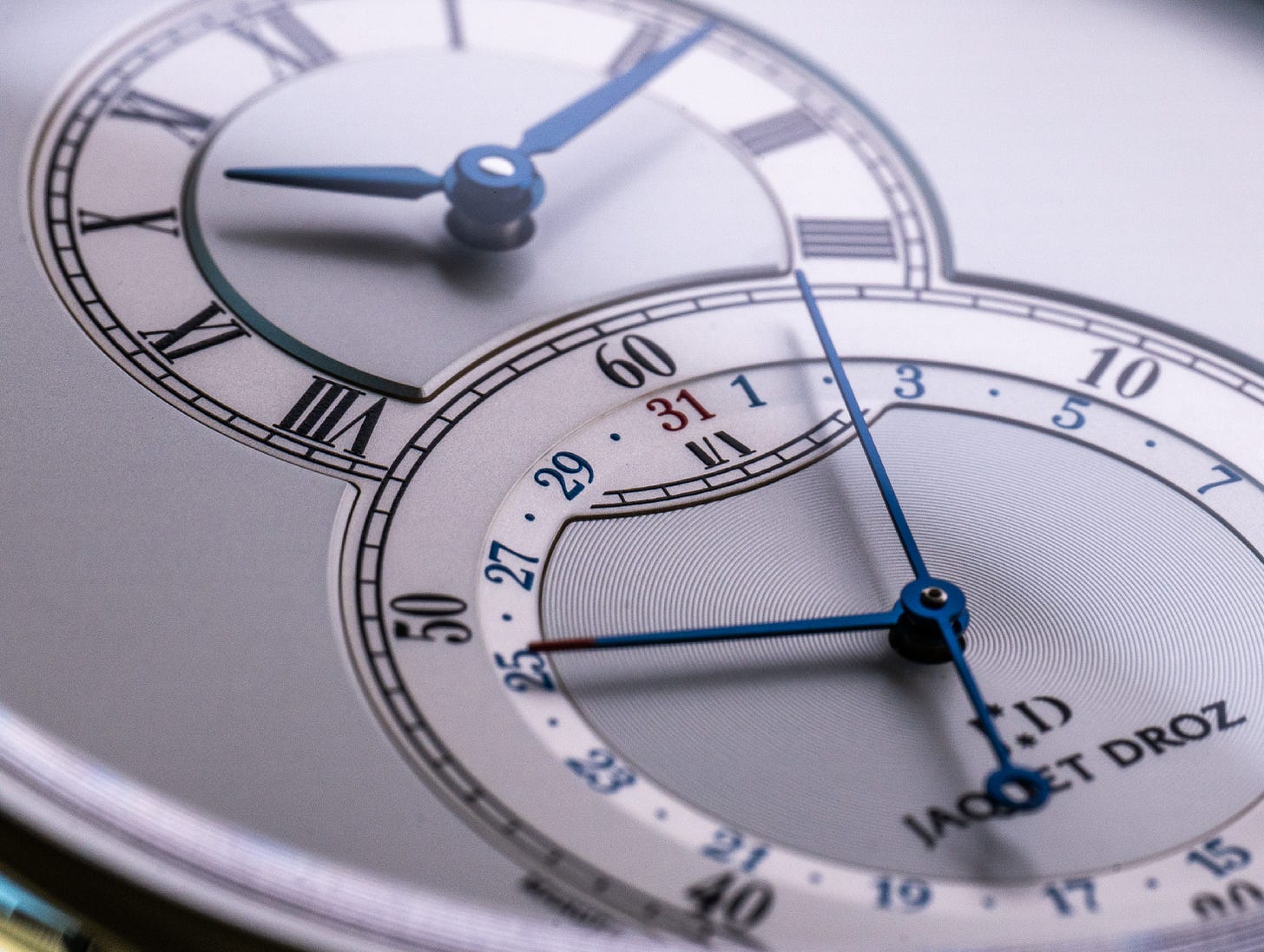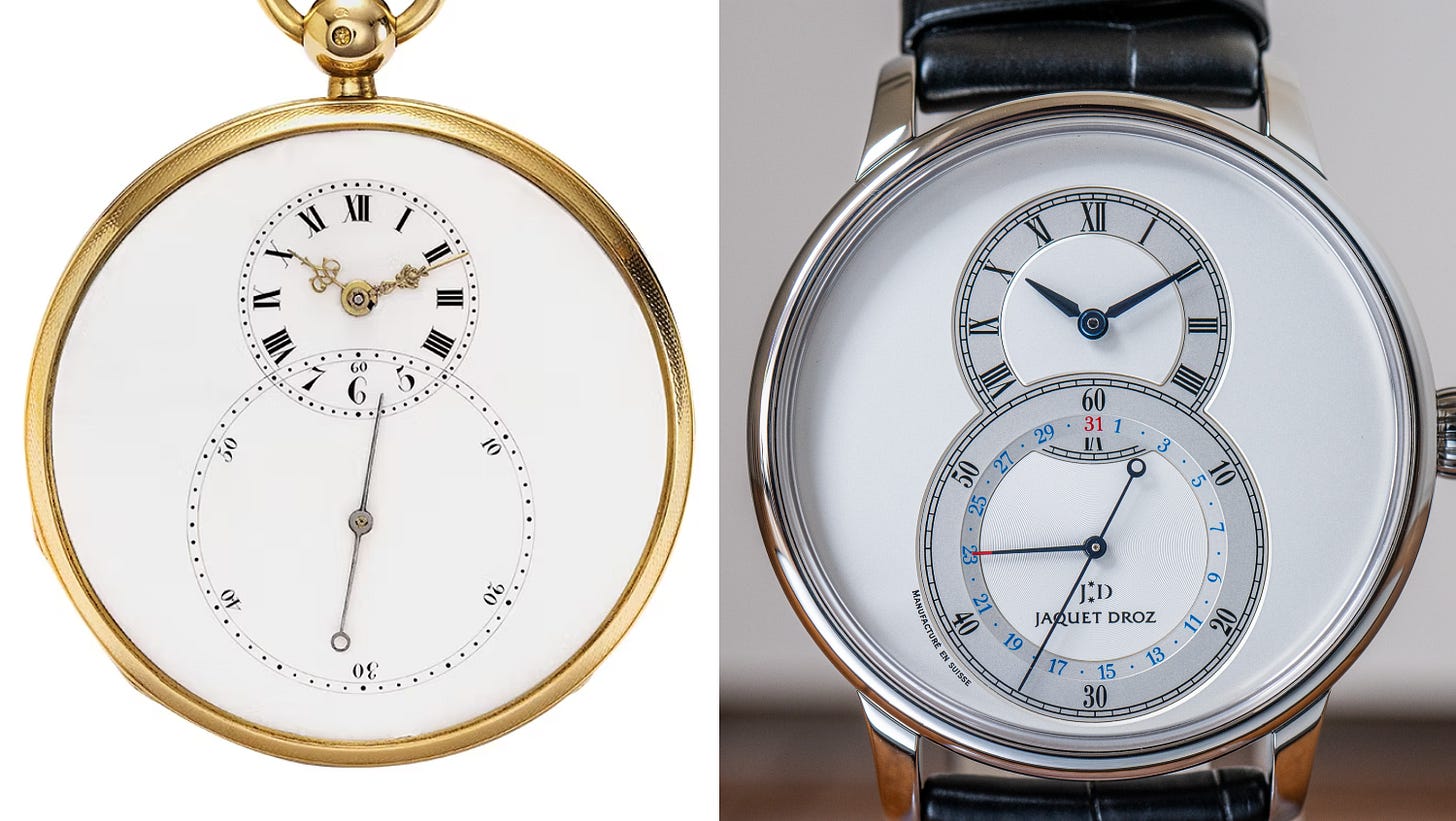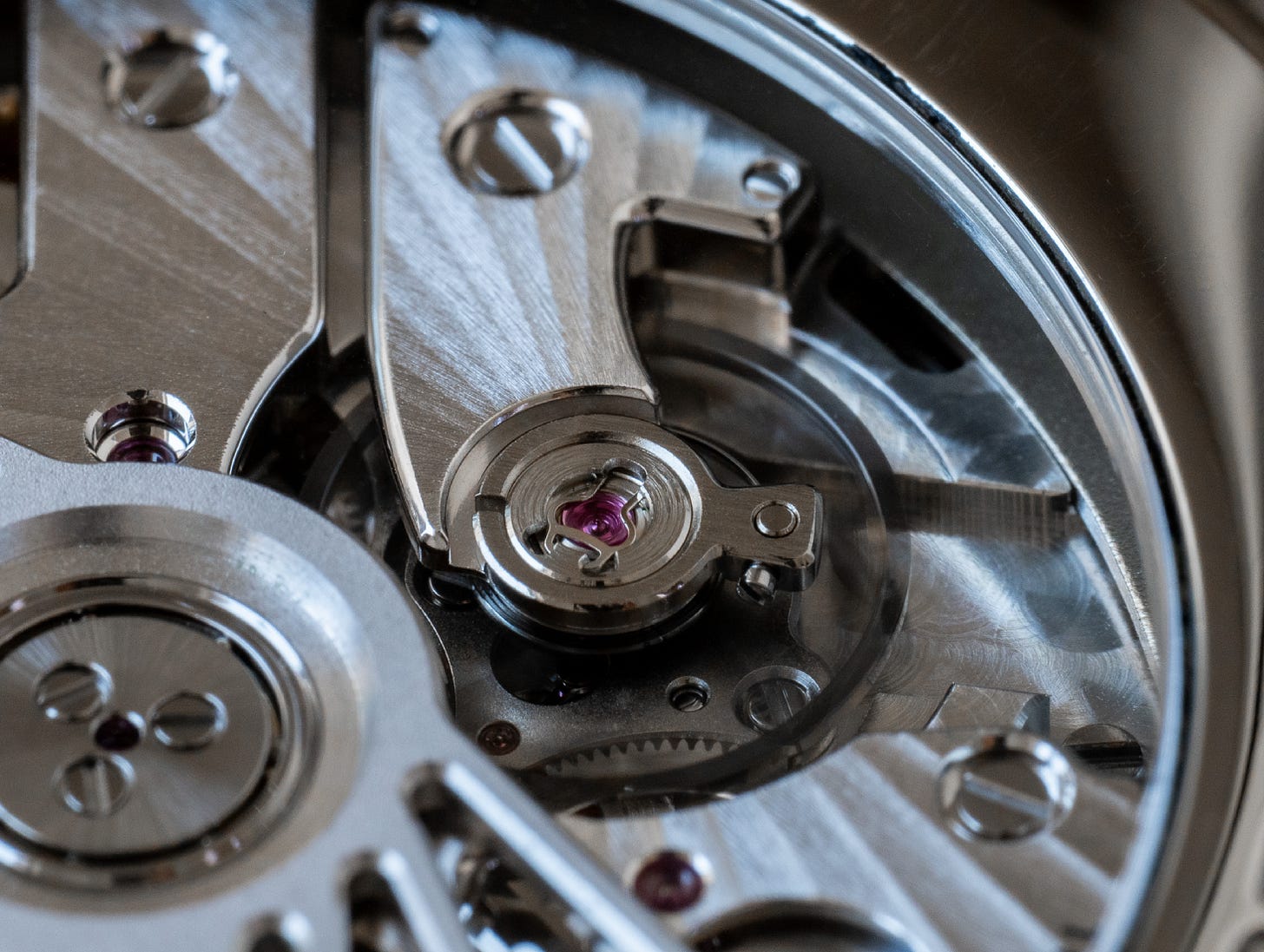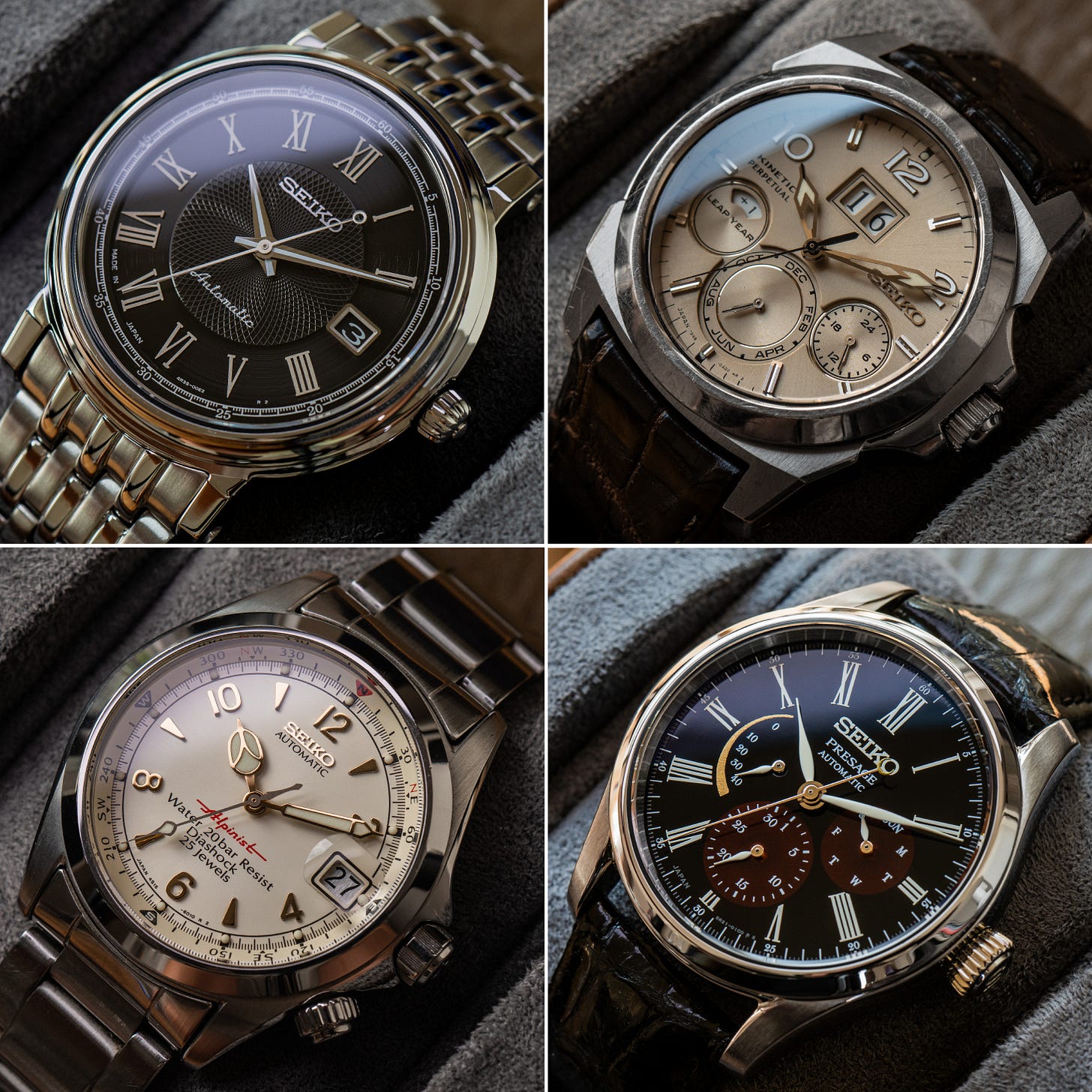The Precursor
As a fair warning, a Swiss watch with a rich history has somewhat taken over this week’s newsletter, so be prepared for something a bit different (and long).
But don’t worry - I’ve made sure it’s outnumbered by two uncommon Japanese pieces. So, without any further ado…
Credor Spring Drive Moonphase GBLL998
Smile because it happened. I recently wrote about one of the final Credor Big Dates, and I’m sad to report that I’m now nearing the last stop on my moonphase journey. But, just like the Big Dates, I saved my favourite for last - and Seiko probably agrees. After all, they chose the GBLL998 to represent the Node Collection on their official Seiko Design website. That’s always a good sign - a bit like a parent daring to announce their favourite child.
In Daddy Seiko’s defence, the GBLL998 is the perfect embodiment of a Node watch. The astronomical term node - the point at which two orbits intersect - represents the collection’s design philosophy. Every Credor in the collection blends classic stylings with bold, unconventional elements, aiming to sit at the intersection of traditional craftsmanship and contemporary innovation.
It’s hard to bridge the gap between Credor’s vintage and neo-vintage eras more seamlessly than this - a solid gold, modestly styled dress watch to which a Spring Drive, moonphase, power reserve indicator, and signature 24/7 motif have been added.
As with most Credors, the devil is in the details. Whether it’s the immaculately flat-polished 24/7 markers, the concentric dial texture, or the hand-hammered golden moon, there’s always something to admire. And the appeal is only heightened by the fact that there are so few Spring Drive Moonphase watches in existence.
The Credor GBLL998 is now available to buy on our website
In great condition overall. The solid gold case has picked up some small marks and hairlines, but there’s nothing of significance. No box or papers, and on an aftermarket strap in keeping with the original design. The gold clasp is the original.
Seiko SARB072
An overwhelming amount of choice. Most Seiko enthusiasts will be familiar with the SARB line - perhaps best known for its sheer variety. Whether you’re drawn to the instantly recognisable SARB017, the elusive salmon-toned SARB037, or the faceted crystal of the original SARB001, there’s something for everyone. Which likely explains why the collection remains so beloved.
The SARBs debuted in 2006 with a handful of colourful options, but by 2010 there were 24 different models. Picking a definitive favourite is nearly impossible, but I’d strongly encourage anyone unfamiliar with the collection to scroll through it at least once - I’m confident at least one or two pieces will catch your eye.
The SARB072 is one of my personal favourites. It’s often playfully called a “Baby Grand Seiko”, thanks to its case shape, polished dauphine hands, and chunky indices - all reminiscent of modern Grand Seiko design. It’s also one of only two SARBs in rose gold, giving it a distinctive warmth that helps it stand out in an already diverse collection.
The Seiko SARB072 is available to buy on our website
In very good condition overall. A few marks can be sent near the top of the bezel. Comes with box and papers, and on the original strap.
It’s not Japanese, but it’s very elegant…
Jaquet Droz “Quantième” Grande Seconde
A watch with history. Get comfortable. I’ve done my best to keep it short, but when a watch company was founded in 1738, even the abridged version will take a while. And like all good stories, a little context is needed before we meet our hero.
Daniel Jeanrichard was an 18th-century watchmaking rogue. Rather than crafting his watch parts under one roof, he created an établissage system. Or, in modern terms, he subcontracted his manufacturing. Today, that approach is standard practice for a lot of watch companies, but back then, to the traditional Swiss watchmaking guilds, it was heresy - a brazen rejection of the sacred, centuries-old ideal of doing it all in-house.
The guilds claimed it would lead to inferior workmanship. Jeanrichard disagreed. Each of his subcontractors were tasked with repeatedly making one singular part - Jeanrichard argued if a person makes 1,000 pinions they’re more of a master craftsmen (at pinion making) than someone who makes every watch part. It’s hard to fault his logic.
In the early 1700s, during the harsh winters of La Chaux-de-Fonds, he began training local farmers to make specific watch parts. To say it took off would be underplaying it. You’ve no doubt heard of La Chaux-de-Fonds, the city at the heart of Swiss watchmaking - Jeanrichard and his daring établissage system is the reason why.
According to Joe Thompson, who covered this origin story far better than I ever could, the effects of Jeanrichard’s influence were far-reaching and long-lasting:
By the time of JeanRichard’s death in 1741, there were several hundred watchmakers in the mountain towns of Le Locle and La Chaux-de-Fonds and the surrounding villages. Later, watchmakers from the now famous Vallée de Joux learned the trade […] and adopted JeanRichard’s établissage system.
And Pierre Jaquet-Droz, the hero of our story and the eventual founder of Jaquet Droz, was one such watchmaker.
Born into a farming family in 1721, Pierre grew up in an increasingly watch-centric La Chaux-de-Fonds. He quickly picked up the trade, under the guidance of his older relatives, and by the tender age of 17 his watchmaking journey had officially begun. While his early work focused on grandfather clocks, which were said to outclass those of his contemporaries - his true passion lay in mechanical innovation.
He began experimenting with automata and musical complications, which caught the attention of European nobility. At 37, he travelled to Spain and presented his work to King Ferdinand VI. It was a resounding success, and he was paid 2,000 gold pistoles by the King. That’s roughly 12.3kg of gold, worth around $1.3 million at today’s spot price!
Flush with funds, he returned to Switzerland to pursue ever more ambitious designs, like humanoid automata.
Word of his innovative designs spread, and so did the demand for in-person demonstrations.
[ Editor’s note: “innovative” is perhaps polite - they’re terrifying by today’s standards, but try viewing them through the lens of a 1770s European. ]
His work was nothing short of remarkable. He built The Writer automaton, pictured above, at a time when Switzerland was still executing people for being a “witch”. Talk about being ahead of the intelligence curve.
Word spread quickly, and he was soon performing demonstrations across the royal courts and estates of England, France, Russia, and Holland. He eventually set up a workshop in London, which at the time was considered the pinnacle of global trade and industry.
Now in his 50s, and tired of travelling, Jaquet-Droz enlisted his adopted son, Jean Frédéric Leschot, to oversee business in the Far East. And in a first for horology, China began importing western-made clocks - over 600 of his creations in just ten years. India and Japan soon followed suit. The business was now booming globally.
It would take something truly monumental to stop Pierre Jaquet-Droz.
How about the French revolution, followed by his death, followed by the Napoleonic Wars? Yeah, that’ll probably do it. Leschot valiantly tried to keep his adoptive father’s company afloat after his passing in 1790, but the implementation of the Continental Blockade by Napoleon immediately put an end to the luxury export market in Europe.
While the company has flirted with closure and changed hands a few times in the last 235 years, Pierra Jaquet-Droz’s spirit lives on. Produced in 2011, the “Quantieme” Grande Seconde on offer today is a faithful recreation of his famous pocket watch from 1784, complete with his signature figure-eight dial layout. It’s hard to say whether the original design was ahead of its time or if the modern version is effortlessly timeless - perhaps both?
The Quantième (or date complication, for you and I) adds a modern touch, while the rest of the dial remains defiantly minimal. Two overlapping subdials are sunken into the silver opaline dial, creating a clean, spacious design that’s hard to ignore.
Just as Pierre would have wanted, the automatic movement inside is made by Jaquet Droz. The in-house 2660Q2 calibre features double barrels for a 68-hour power reserve, and the silicon balance spring and pallet horns make the escapement fully antimagnetic. It’s beautifully finished, mechanically robust, and historically reverent - a trifecta that’s not always easy to achieve in modern watchmaking.
The Jaquet Droz Grande Seconde is available to buy on our website
In great condition. Just serviced. Small hairlines can be seen on close inspection, but there are no marks of any significance. Full box and papers, and on the original strap.
Watches you’ve seen before…
Four Seikos. Four JDM favourites. All of the previously featured watches above found their footing in Japan long before they gained popularity in the West.
The original articles for each watch can be found below:
Seiko “Black Guilloche” SARY007
And all four are available to buy on our website:
Please click on the link above to read each condition report and see additional photos.
Don’t forget to follow my Instagram to see all of the watches above in full cinematic glory next week.


